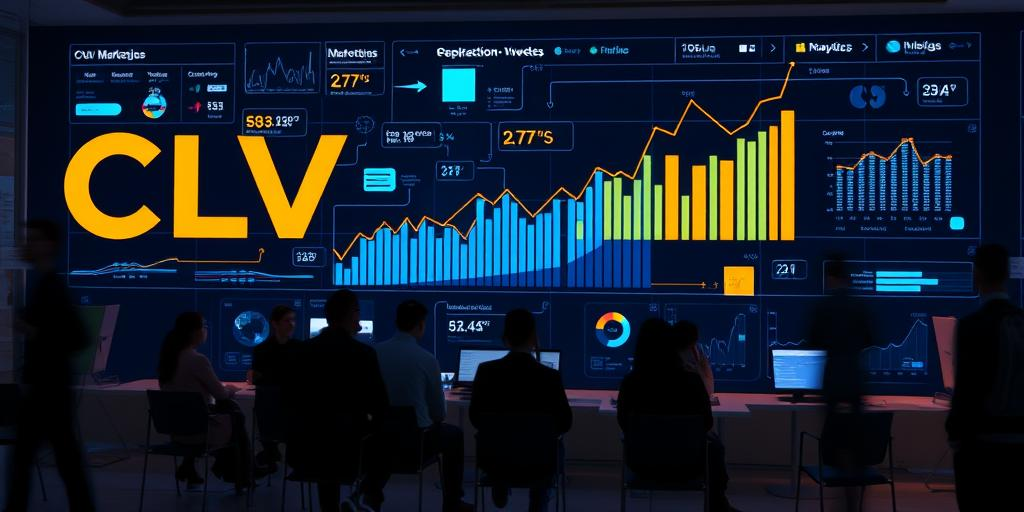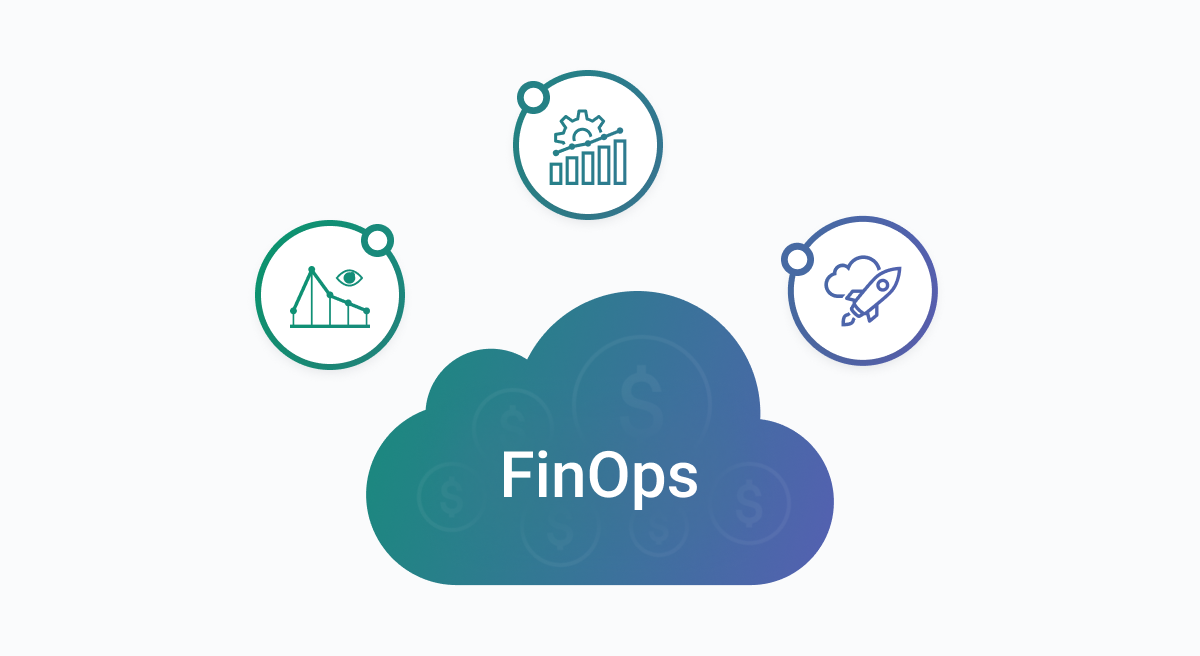Introduction: The New Gold Rush in the Cloud Economy
The phrase “Cloud Architect” has transcended a mere job title; it signifies a master strategist in the trillion-dollar global cloud economy. These professionals don’t just build systems; they craft the financial and technical blueprints for digital empires. The massive compensation—often reaching the high six-figures and beyond—isn’t paid for writing code or deploying services. It’s paid for solving the biggest, most expensive problems in the modern enterprise: cost control, vendor lock-in, and operational complexity.
The explosive growth of cloud adoption, especially the complexity introduced by Multi-Cloud and Hybrid environments, has created an urgent need for specialists who can truly master both the technical stack and the financial ledger. This mastery is formalized in a discipline known as FinOps (Financial Operations). FinOps is the secret sauce that separates a costly, sprawling cloud deployment from a hyper-efficient engine generating colossal Return on Investment (ROI).
This article delves deep into the core technical and strategic secrets wielded by elite Cloud Architects. We will explore how they integrate Multi-Cloud freedom with rigorous FinOps principles, effectively turning the cloud’s inherent complexity into a monumental profit center, justifying their seven-figure salaries. This is your comprehensive guide to understanding and implementing the strategies that make the cloud money.
I. Deconstructing the Value Proposition: Why Cloud Expertise Commands Millions

The high salaries commanded by top-tier Cloud Architects are directly proportional to the financial risk they mitigate and the revenue they enable. Their value lies in navigating the inherent financial traps of the cloud.
A. The Cost Overrun Nightmare
Without proper oversight, cloud bills explode. Companies often pay for resources they don’t use (zombie infrastructure), select inefficient database tiers, or get hammered by unforeseen data egress fees. A single mismanaged enterprise cloud deployment can easily waste millions of dollars annually. A Cloud Architect’s primary function is to transform this waste into savings.
B. The Peril of Vendor Lock-In
Choosing a single public cloud provider (AWS, Azure, or GCP) simplifies operations but sacrifices pricing power and innovation. Multi-Cloud—the strategic use of two or more providers—is essential for resilience and leverage. However, managing multiple vendor platforms simultaneously introduces complexity that can erase any cost benefit unless handled by a true expert. The Architect is the gatekeeper against this strategic vulnerability.
C. The FinOps Imperative: Bridging Technology and Finance
FinOps is a cultural practice that integrates technology, finance, and business teams. It’s the engine of profit in the cloud. Cloud Architects are paid well because they are the only people who can fluently speak the language of both engineering (scaling with Kubernetes) and finance (optimizing reserved instances). They turn cloud spending from a mysterious line item into a predictable, optimized, and attributable business driver.
II. Mastering the Multi-Cloud Architecture: Beyond Simple Lift-and-Shift

Elite Cloud Architects design their environments to be inherently efficient and flexible. This requires a strategy that abstracts applications from the underlying infrastructure, guaranteeing portability and preventing vendor dependence.
A. Adopting a Vendor-Agnostic Infrastructure-as-Code (IaC)
Manual configuration is slow, error-prone, and impossible to scale across multiple clouds. IaC standardizes deployment.
A. The Terraform Imperative: Top architects exclusively use vendor-agnostic IaC tools like HashiCorp Terraform. Terraform allows the entire cloud environment (virtual networks, compute, storage, security groups) to be defined in reusable code. This code can be applied to AWS, Azure, or GCP with minimal changes, making infrastructure deployment repeatable, auditable, and easily portable between providers. B. Ansible and Configuration Management: Complementary tools like Ansible manage the software and configuration inside the provisioned machines. Separating provisioning (Terraform) from configuration (Ansible) ensures maximum agility and standardization across diverse cloud OS environments.
B. Kubernetes: The Operating System of the Cloud
For modern application deployment, the container orchestrator Kubernetes (K8s) is non-negotiable.
A. True Portability with Containers: Applications are packaged into Docker containers, isolating them from the underlying OS. K8s then manages these containers. Since Kubernetes runs on every major cloud (EKS, AKS, GKE) and on-premises, a properly containerized application can move between clouds with essentially no code change. B. Avoiding Managed Service Lock-in: While using native managed services (like Amazon SQS or Azure Cosmos DB) can be convenient, it creates instant lock-in. Architects prioritize Kubernetes-native tools and services (such as open-source databases deployed on K8s) to maintain a maximum level of abstraction, enabling rapid workload migration to the cheapest or most performant cloud at any given time.
C. The Data Egress Dilemma and Data Gravity Solutions
Data egress fees are the most vicious trap of the Multi-Cloud world. Architects neutralize this risk strategically.
A. Distributed Data Architectures: Instead of centralizing all data in one cloud, architects design distributed data platforms. They use federated query tools (like Google BigQuery Omni or AWS Redshift Spectrum) that can query data where it lives, rather than forcing an expensive move. B. Intelligent Data Tiering: Data is categorized by temperature (hot, warm, cold). Cold data (archives) is placed on the provider offering the cheapest long-term storage (e.g., Azure Archive Storage or AWS Glacier), as retrieval is rare. Hot data is placed on the provider with the best read/write latency for the current workload.
III. FinOps in Practice: The Seven-Figure Strategy

The technological foundation (Multi-Cloud) only unlocks the potential for savings. FinOps is the execution layer that delivers the promised millions.
A. Establishing a Cloud Center of Excellence (CCoE)
The CCoE is the cross-functional group responsible for cloud governance. It must include:
A. Engineers and Architects: To define and enforce the technical standards. B. Finance and Procurement: To manage budgets, forecasting, and purchasing models. C. Business Owners: To tie spending to specific business value and ROI.
B. FinOps Strategy 1: Real-Time Cost Attribution and Visibility
You cannot manage what you cannot measure. Architects prioritize tools that provide a unified, granular view of spending across all platforms.
A. Tagging and Labeling Enforcement: Every single resource (VM, database, load balancer) must be mandatorily assigned tags (e.g., Project:Alpha, Owner:JohnDoe, Environment:Prod). FinOps tools use these tags to accurately attribute every dollar spent to the correct team or project. B. Anomaly Detection: Automated monitoring flags spending spikes that deviate from historical patterns. This is crucial for catching waste, accidental oversized deployments, or security compromises within minutes, before they become expensive problems. C. Showback vs. Chargeback: Implement a Showback model first, where teams see their cloud costs without being penalized. Once the culture is mature, move to Chargeback, where teams are financially responsible for their usage, incentivizing them to optimize.
C. FinOps Strategy 2: Automated Resource Optimization (The “Sizing Game”)
Most instances are oversized. Architects use automated systems to relentlessly right-size resources.
A. Continuous Rightsizing: Tools analyze CPU and memory usage over time and automatically recommend (or automatically apply) smaller, more appropriate instance types. Downsizing an unnecessary 16-core VM to a 4-core VM is pure profit. B. Scheduling Automation: Non-production environments (Dev, Test, QA) are automatically powered down outside business hours (e.g., Friday 7 PM to Monday 8 AM). This simple automation can easily cut 60% of non-production compute costs. C. Purchasing Strategy (RI/Savings Plans): Architects analyze historical usage patterns and lock in usage commitments with providers via Reserved Instances (RIs) or Savings Plans. Committing to usage for one or three years provides deep discounts (often 30-50% off) for stable workloads.
IV. The Security-as-Code Mandate: Multi-Cloud Risk Mitigation
The complexity of Multi-Cloud introduces significant security risk. High-value architects ensure that security is not an afterthought, but an integral part of the IaC pipeline (DevSecOps).
A. Centralized Identity Management (IdM)
Managing users and permissions across AWS IAM, Azure AD, and internal LDAP is a logistical nightmare and a security risk.
A. Federated Identity: Implement a single, centralized Identity Provider (like Okta or Azure AD) that federates identity across all cloud environments. Users log in once, and their access rights are uniformly managed and revoked from the central source. B. Principle of Least Privilege (PoLP): Permissions must be granted only for the specific resources and actions required to perform a task. Architects mandate this using Policy-as-Code (PaC) tools like Open Policy Agent (OPA) embedded directly into deployment pipelines.
B. Cloud Security Posture Management (CSPM)
CSPM tools continuously monitor cloud configurations to identify dangerous misconfigurations.
A. Automated Compliance Checks: CSPM solutions scan resources for common security mistakes, such as open S3 buckets, unencrypted databases, or misconfigured network access. B. Policy Enforcement in the Pipeline: Crucially, architects stop security risks before they are deployed. They integrate security scanning tools into the Continuous Integration/Continuous Delivery (CI/CD) pipeline, preventing a developer from deploying a non-compliant resource in the first place.
V. Strategic Differentiation: The Next-Gen Architect
The highest-paid architects go beyond cost-cutting and security; they actively build new revenue streams using cloud-native innovations.
A. Edge Computing and IoT Monetization
The biggest trend is moving compute power closer to the data source (devices/users) to reduce latency and save on core cloud fees.
A. Hybrid Edge Strategy: Architects design systems that intelligently split workloads: high-latency, massive data processing occurs in the central public cloud, while low-latency, real-time analytics and decision-making happen at the Edge (e.g., factory floor, retail store). B. IoT Data Pipeline Efficiency: They manage the ingestion of massive volumes of IoT data, implementing stream processing tools (like Kafka) on lightweight cloud edge devices to filter and summarize data before sending only the essential information to the core cloud—saving on storage and transfer costs.
B. AI/ML and Data Monetization as a Service
Cloud providers are now the easiest way to commercialize data and AI models.
A. Creating Data Products: Architects enable the creation of high-value, curated Data Products from internal enterprise data. They use cloud marketplaces to list and sell these data products (e.g., anonymized consumer insights) as a new revenue stream, realizing massive external monetization. B. Serverless Function Integration: They use Serverless Functions (AWS Lambda, Azure Functions, GCP Cloud Functions) to deploy AI/ML inference endpoints. This model allows the company to charge customers on a true “pay-per-use” basis for AI services, ensuring maximum profitability and granular pricing.
VI. The CCoE Playbook: Institutionalizing Multi-Million Dollar Savings

To ensure the success is repeatable and scalable, the CCoE must institutionalize the savings.
A. Mandate Unified Tooling: The CCoE dictates the standard tools (Terraform, Kubernetes, a specific CMP) to prevent “shadow IT” and tool sprawl. B. Establish Guardrails Over Gates: Instead of rigid approval gates that slow down developers, architects implement guardrails—automated checks that keep developers operating within safe, cost-optimized, and secure parameters. For example, a developer can choose any VM size, but the system issues a clear, automated warning if it exceeds the budgeted cost. C. Invest in Multi-Cloud Training: The CCoE funds training programs focused on cloud provider certifications and vendor-neutral tools (Kubernetes, Terraform), cultivating a highly versatile and cost-aware engineering talent pool.
Conclusion: The Path to Cloud Riches is Through Management
The massive compensation paid to Cloud Architects is not a salary; it’s a financial guarantee. They are hired to ensure that the cloud—the most powerful economic engine of the 21st century—operates with surgical precision and financial discipline. By mastering FinOps, standardizing on Multi-Cloud tooling (Terraform, Kubernetes), and strategically mitigating the risk of data egress and security fragmentation, they convert complex infrastructure into clear, attributable, and consistently maximized ROI. The secrets to making millions in the cloud are not hidden in new technologies, but in the disciplined management of the ones that already exist.














